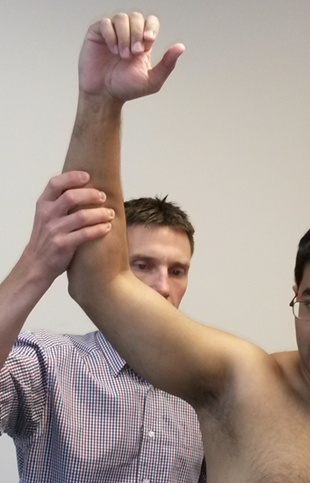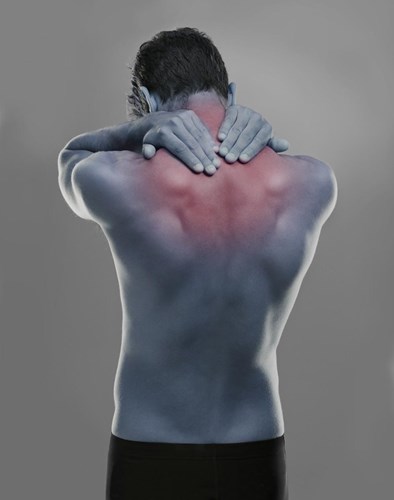How to look after your shoulders
20 June 2018
1. Always stretch and warm-up / cool down before and after exercise.
Medical research has shown that stretching improves circulation by lengthening skeletal muscle. This increases muscle tone and the elasticity (‘stretchiness’) of the muscle. It is thought that you should stretch before and after a work-out to maintain range of motion, joint flexibility and muscle control. It can also help improve energy levels. Stretching can have therapeutic benefits too as it can help to relieve cramped muscles. When you exercise for long periods it can be exhausting and really drain your energy levels, but with the proper stretching exercises and breathing techniques you can feel rested, calm and relaxed, and better set up for a good night’s rest. This is important for muscle recovery and repair.

2. Don’t do heavy activity at arms-length.
Think about your core strength when lifting. This means maintaining a good stance and taking weight through the centre of your body rather than relying on a relatively small number of muscles in your arms to do all the work. Occasionally we all need to lift something heavy and it can be unavoidable, but there are ways of lifting correctly and that help to avoid injury.
Lifting a weight close to your body decreases the lever arm of the force and therefore puts less strain on the muscles and joint. It also uses bigger muscles and sends the force through the centre of the body and down to the feet. Ensuring your core is strong and flexible will help you in the gym, playing sports or just going about your daily business. A strong core will also help you maintain good posture and can avoid issues like muscle tears in the shoulder and lower back pain, amongst numerous other problems.
3. Holding the arm ‘up and out’ is not a good position for the shoulder joint.
In this position the shoulder is very vulnerable to injury. The shoulder is like a golf-ball on a tee. The ball is huge in comparison to the socket. It isn’t even a socket; it is more like a small plate. Most of what keeps our shoulder ‘in joint’ is actually the muscles, tendons and ligaments. This arrangement affords us such a great range of movement at the joint, in the normal situation. If the arm is up and out, as shown in the photo, the ball is actually down and forward on the socket. This is a weak point in the shoulder and any additional force here can cause the shoulder to come out of joint, or dislocate. Once a shoulder dislocates it tends to cause damage to the joint that doesn’t heal well on its own. Particularly those aged between 15 and 30 years old are at risk of repeated dislocations which may require surgery to prevent recurrence.

4. If you do injure your shoulder, take some rest and some anti-inflammatory drugs.
If you are unlucky and pick up an injury, take some rest if you possibly can. Don’t stop moving the joint completely but avoid lifting much at all and ease the pain by taking some painkillers as directed by a pharmacist or your doctor. Perhaps take a light jog and the gentle movement of the arms may help, or ease right off those heavy weights in the gym for a couple of weeks. Many problems will resolve with this alone but if the problems persist for more than a couple of weeks it may be worth asking a professional for advice.

5. Avoid repetitive activity.
Avoid tasks which involve a lot of repetition, particularly if this is also in an awkward position, for example stooping, stretching or slouching. Try to maintain a good posture and avoid reaching, particularly if an item is heavy. Instead, move your entire body and engage your core (your central body strength).
6. Balance your work out across the body.
I see many sports men and women who are keen gym-goers and like to achieve results. It is easy to really work on the obvious muscle groups and those which are more visible. So it’s no surprise that many end up ripped on the front of their body and less so on the back. This can lead to shoulders that are rolled forwards. This means that the ball of the shoulder is more likely to catch under the roof of the shoulder as it is lifted up. This causes pain; commonly called impingement pain. The solution in these cases is to work with a physiotherapist to balance the shoulder muscles to achieve better movement.

7. Swimming is fantastic for shoulders
Even if you are not a keen swimmer, the anti-gravity properties of water can really help rehabilitation. Stand in the water at a comfortable depth (ideally up to armpit level) and allow the water to support you joint as you go through a series of shoulder movements. A trained physio can help you with a routine. Water has been shown to have excellent pain relieving properties and the resistance offered by the water can be a perfect level to work at particularly when recovering from surgery or resting an injury.

Mr Simon Fogerty is a Consultant Orthopaedic Shoulder and Elbow Surgeon who has a special clinical interest in shoulder instability, rotator cuff surgery and shoulder replacement.
The content of this article is provided for general information only, and should not be treated as a substitute for the professional medical advice of your doctor or other healthcare professional.

